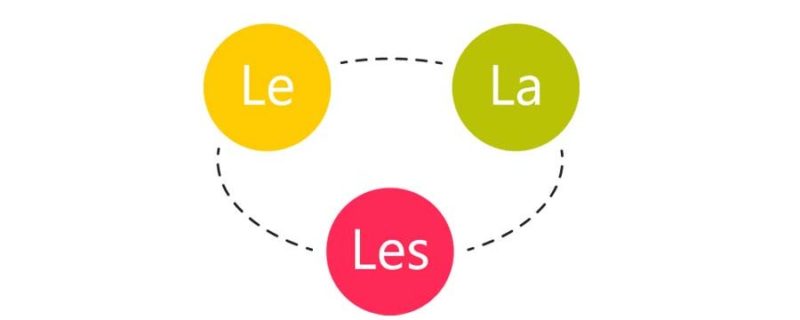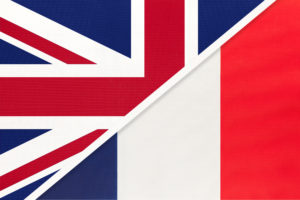Master the Grammar of French Articles
If you were expecting a post about French journalism, I’m afraid you’re in the wrong place. But, if you want to learn about the grammar behind French articles, we’ll talk about everything you need to know. Learn about French definite and indefinite articles, their forms, uses, and construction. With this knowledge, you’ll sound just like the locals, and you’ll be one step closer to French fluency.
What Are French Articles?
Articles are words you use before nouns to define their definitiveness. In English, there are three articles: “the”, “a” and “an”. “The” is a definite article, because the noun you use it with a specific noun. And “a” and “an” are indefinite for the opposite reason. In French there are a lot more articles than in English. There are three different categories of articles, and a total of 10 different forms. These change according to the gender and number of the noun.
French Definite Articles
In French grammar, the language has three versions of the English definite article “the.” This accommodates the two genders and plurals of those genders.
Singular |
Plural |
|
Masculine |
le / l’ |
les |
Feminine |
la / l’ |
les |
For both singular versions, use “l’” when the noun begins with a vowel or a silent h. The plural version of the is the same regardless of the original gender of the noun. Here are some examples:
- le garçon – the boy
- l’homme – the man
- la femme – the woman
- l’amie – the friend (girl)
- les enfants – the children
This great video can tell you how to pronounce French definite articles:
Definite Articles and Prepositions
When dealing with the prepositions “à” and “de,” you end up with a completely different word. Note that you only do this when the masculine singular and plurals.
à + le = au
- J’ai envoyé une note au président de la compagnie. I sent a note to the president of the company.
à + les = aux
-
Nous sommes allés aux plages. We went to the beaches.
de + le = du
- C’est la balle du garçon. That’s the boy’s ball.
de + les = des
- Nous avons pris les œufs des poules. We took the eggs from the hens.

French Indefinite Articles
Indefinite articles are very simple in French. Indefinite articles in English are “a” and “an,” based on if the noun starts with a consonate or a vowel. In French, you don’t need to worry about the beginning of the noun, only its gender. There are only two kinds of French indefinite articles, and their form only changes based on the gender of the noun. Masculine nouns are preceded by “un.” Feminine nouns are preceded by “une.”
- un restaurant – a restaurant
- une heure – an hour
Remember that “a” means that there is only one, so you will not need to worry about a plural version for indefinite articles. While there is no plural indefinite article in English, French uses “des” or “de”/“d’” if there is an adjective before the noun, or an adverb before the article:
- J’ai des amis. I have friends.
- J’ai beaucoup d’amis. I have many friends.
- J’ai de vieux amis I have old friends.
Use this video to listen to the pronunciation of “un” and “une”:
Partitive Articles in French
When you want to refer to only a portion of an uncountable noun, French uses partitive articles. The best English translation to partitive articles is “some”. You often use them to describe food or drink. There are four different kinds of partitive articles in French, they’re different based on the gender and number of the noun.
Singular |
Plural |
|
Masculine |
du / de l’ |
des |
Feminine |
de la / de l’ |
des |
- du croissant – some croissant
- de la pomme – some apple
- de l’omelette – some omelet
- des frites – some fries
- Voulez-vous du café ? Do you want coffee?
Vous-vous de l’eau ? Do you want water? - Nous avons des bananes et des pommes. We have bananas and apples.
Elle n’a pas d’amis ici. She hasn’t any friends here.
This video explains the intricacies of French partitive articles:
Using Articles to Signal Gender
While the form of the articles is determined by the gender of the noun they represent, the opposite is also true. If you ever want to concentrate on the gender of the noun, the best way to recognize it is to look at the article before it.
How to Learn and Use French Articles
The first step of learning the definite, indefinite, and partitive articles in French is to understand them. Know the difference in meaning to fully engage with these articles. Then, these top tips can help you further learn the use of French articles in everyday speech:
- Study articles in sentences: The best way to learn a language is to learn the most common phrases. Because that’s exactly how the locals speak. Seeing these articles in their natural environment is the best way to learn French.
- Conjugate articles yourself: It’s true, there are a lot more forms of articles in French than in English. The best way to learn the difference is to conjugate them yourself. When you’re writing or speaking French, make sure you always create “du” instead of “de la”. Soon, it’ll be like second nature.
- Say articles out loud: The only way to reach French fluency is to speak it. By practicing your pronunciation, you can truly get comfortable with the language. Say these articles out loud to practice them as much as possible. “Un” is an especially hard sound to make, give yourself time to master it.
Learn French Grammar Easily
The best way to learn French grammar is to not study it. That’s right, you don’t need to sit down with a book and drill the grammatical rules and exceptions of French. Instead, learn French grammar in a natural and fun environment. Use OptiLingo to start learning French grammar the right way.
OptiLingo is a language learning app that’s built to give you results. It gives you the most common French words and phrases, so you can learn the language naturally. And best of all, this app makes you speak the language too. Build your foreign language fluency and confidence while having fun. Download OptiLingo today to discover the benefits of French proficiency!







